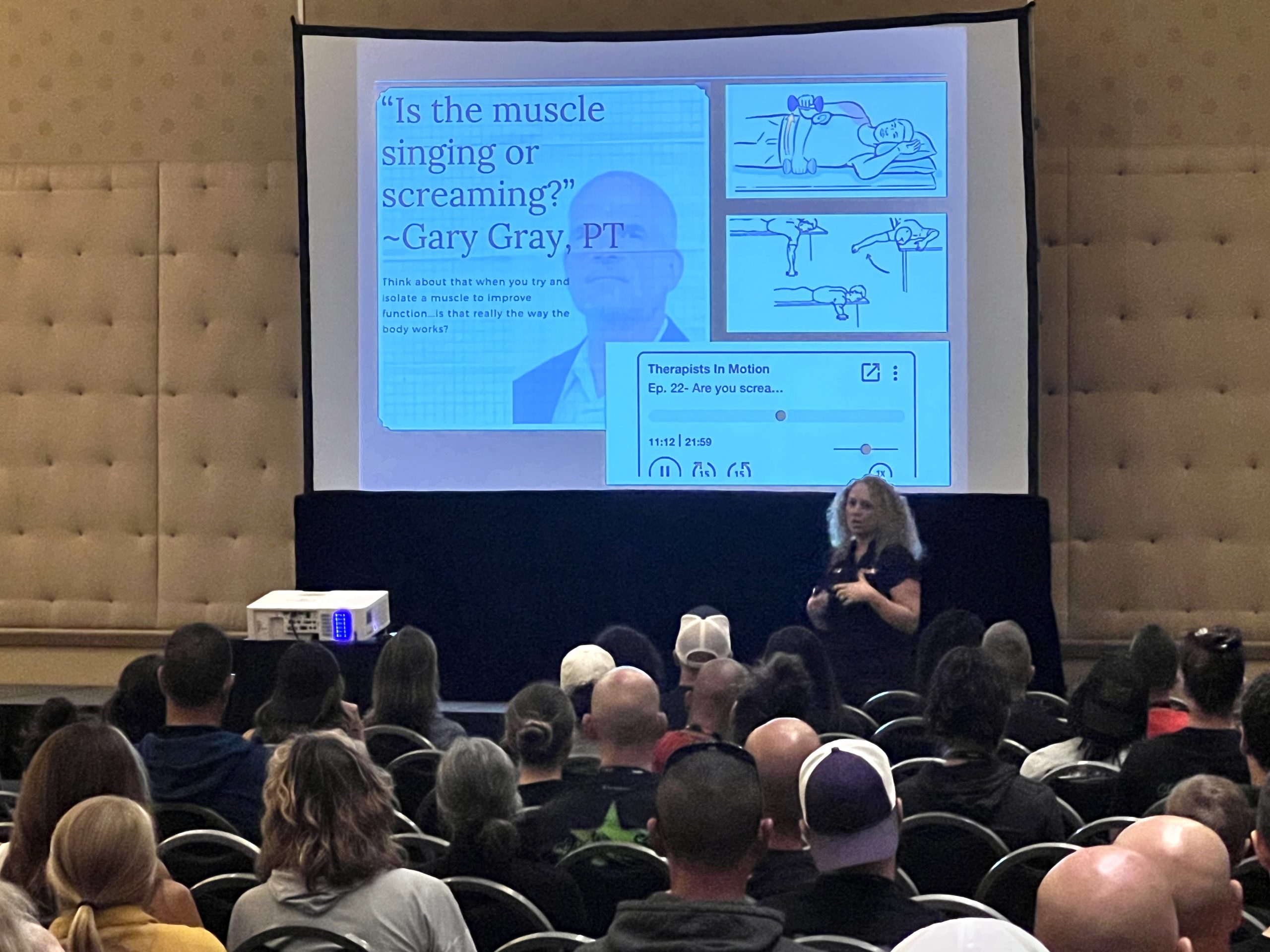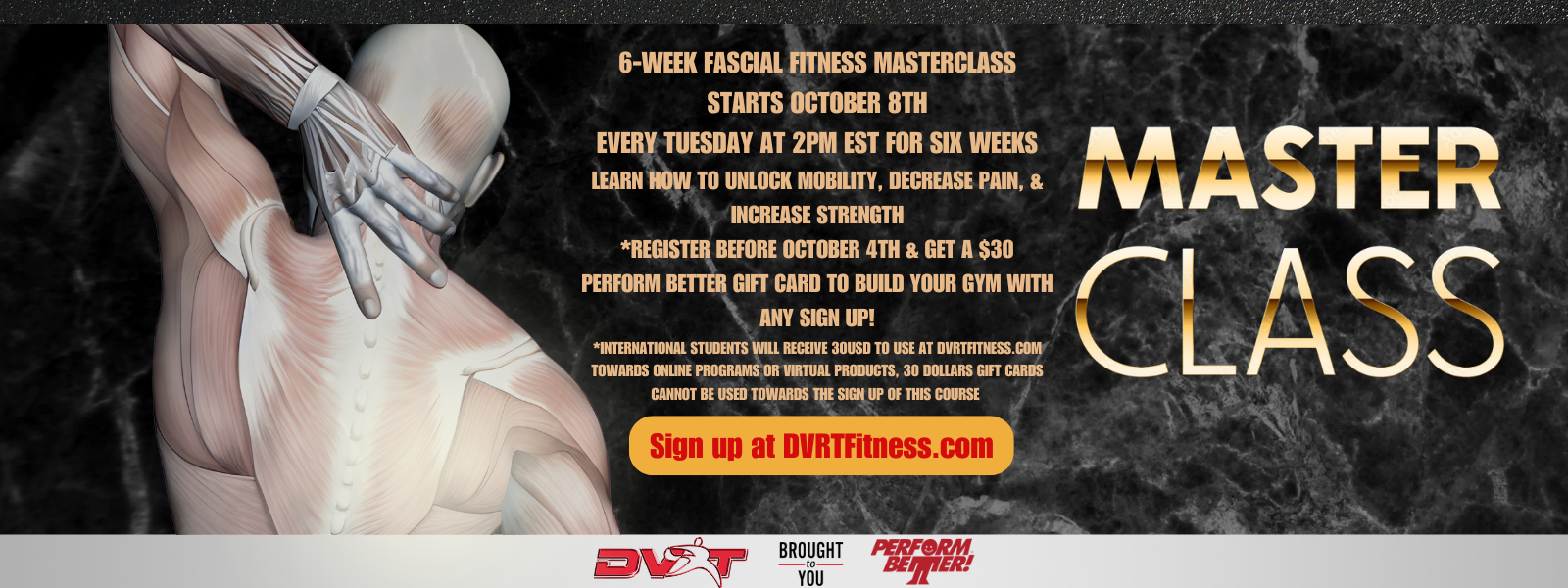Is Stretching Hurting Your Workouts?
2024-09-22
Jessica Bento, Physical Therapist (Creator DVRT Restoration Certification, DVRT Rx Shoulder, Knees, Pelvic Control, & Gait Courses)

Should you stretch or not stretch, is that the REAL question? When I became a physical therapist over 20 years ago, there was no question you should stretch someone if they had restricted range of motion. Over the years, I have seen the mentality change to stretching being “bad” and promoted as not helpful. So, what is the truth, and how does it impact what YOU do in your workouts and for your goals?
Let’s look at the promoted negatives of stretching first, one of the most common now is that stretching will weaken you. One of the more cited studies looked at stretching for 30 seconds for two rounds of the quadriceps. The impacts of stretching on power output was insignificant except for the last measure of 162 degrees which the decrease was a whopping 7 degrees. All of this was tested on an isokinetic machine so not sure how that is reflected in more functional movements (1).
A study on women’s college basketball players found NO decrease in force output after stretching (2). What can be REALLY confusing, even for the researchers, is a study that found static stretching did decrease the force output of quadriceps in an isokinetic leg extension test, BUT jumping and more power based functional movements were left unaffected (3). This led the researchers to both suggest NOT to do static stretching if you were going to do a maximal isometric almost isolated exercise (which not many people do), while also suggesting TO stretch if you were going to do something powerful like jumping. Does your head hurt yet? I get it if it does because it made mine hurt!

What an isokinetic knee test looks like
What Should You Do Then?
Doesn’t sound like we have done much to answer the question of whether to use stretching or not. However, what people need to learn is how to use science along with real world situations. There is quite a bit of evidence that stretching can help with painful things like knee osteoarthritis (4), back pain (5), and shoulder pain (6). What IS interesting is that stretching AND strengthening seem to have a more positive impact on pain than just one by itself (7).
I think what is important to discuss is WHY do a lot of people think stretching is important and what is occurring. The truth is that when people are stretching they probably aren’t stretching the muscle as much as they are the fascia.
This is important because our fascia has MORE nerve endings than even skin! So, when we don’t have good elasticity of our connective tissue because we are sedentary, we have an injury, postural issues, overuse, and more, we can get pain from the tissue actually changing and causing these nerve endings to react and our nervous system becomes more sensitive to these sensations. When it comes to helping pain it is obvious that stretching can be part of our plan, but because pain is also complex, if we can combine stretching with other variables that can have a positive impact, we can achieve more.
A study that compared mind-body intervention like Tai Chi to stretching in 20 year olds with low back pain (a population that usually doesn’t get studies with such strategies) found that Tai Chi was MORE effective in not only reducing back pain, but also decreased the overactivity of muscles that often result when we experience pain (8). So, not only did it help us with lowering pain, but also increased movement efficiency. There are a number of reasons that can be with breath work, mindfulness, stability, more functional movement, and dynamic stretching all in one. However, you don’t need to be a Tai Chi master as some of our great coaches show below using our Myofascial Integrated Movement (MIM) system and Mobility Training Balls (you can find HERE).
The point is that how we employ stretching and how we combine it with other variables in our workouts may be the answer. I don’t think anyone is recommending just stretching alone, but rather I think part of an overall program. Stretching seems to be better though when combined with functional movement and other concepts like breathing exercises, stability, and the right intent. Check out the two video posts below and if you want to learn more I hope you will come to our 6-week online Fascia Fitness Masterclass starting on October 8th (registration closes October 4th) HERE
View this post on Instagram
References:
- Nelson AG, Allen JD, Cornwell A, Kokkonen J. Inhibition of maximal voluntary isometric torque production by acute stretching is joint-angle specific. Res Q Exerc Sport. 2001 Mar;72(1):68-70. doi: 10.1080/02701367.2001.10608934. PMID: 11253322.
- EGAN, ALISON D.1; CRAMER, JOEL T.1; MASSEY, LAURIE L.2; MAREK, SARAH M.2. ACUTE EFFECTS OF STATIC STRETCHING ON PEAK TORQUE AND MEAN POWER OUTPUT IN NATIONAL COLLEGIATE ATHLETIC ASSOCIATION DIVISION I WOMEN’S BASKETBALL PLAYERS. Journal of Strength and Conditioning Research 20(4):p 778-782, November 2006.
- Power, Kevin, et al. “An acute bout of static stretching: effects on force and jumping performance.” Medicine & Science in Sports & Exercise 36.8 (2004): 1389-1396.
- Luan, Lijiang, et al. “Knee osteoarthritis pain and stretching exercises: a systematic review and meta-analysis.” Physiotherapy 114 (2022): 16-29
- Hatefi, Mohamadreza, Farideh Babakhani, and Mohadeseh Ashrafizadeh. “The effect of static stretching exercises on hip range of motion, pain, and disability in patients with non-specific low back pain.” Journal of experimental orthopaedics 8 (2021): 1-6.
- Turgut, Elif, Irem Duzgun, and Gul Baltaci. “Stretching exercises for subacromial impingement syndrome: effects of 6-week program on shoulder tightness, pain, and disability status.” Journal of sport rehabilitation 27.2 (2018): 132-137.
- Diz, Juliano Bergamaschine Mata, et al. “Exercise, especially combined stretching and strengthening exercise, reduces myofascial pain: a systematic review.” Journal of physiotherapy 63.1 (2017): 17-22.
- <iframe width=”560″ height=”315″ src=”https://www.youtube.com/embed/X5YbDVolXzQ?si=yrE9uXI2Wz7qa_0A&start=183″ title=”YouTube video player” frameborder=”0″ allow=”accelerometer; autoplay; clipboard-write; encrypted-media; gyroscope; picture-in-picture; web-share” referrerpolicy=”strict-origin-when-cross-origin” allowfullscreen></iframe>
© 2025 Ultimate Sandbag Training. Site by Jennifer Web Design.







